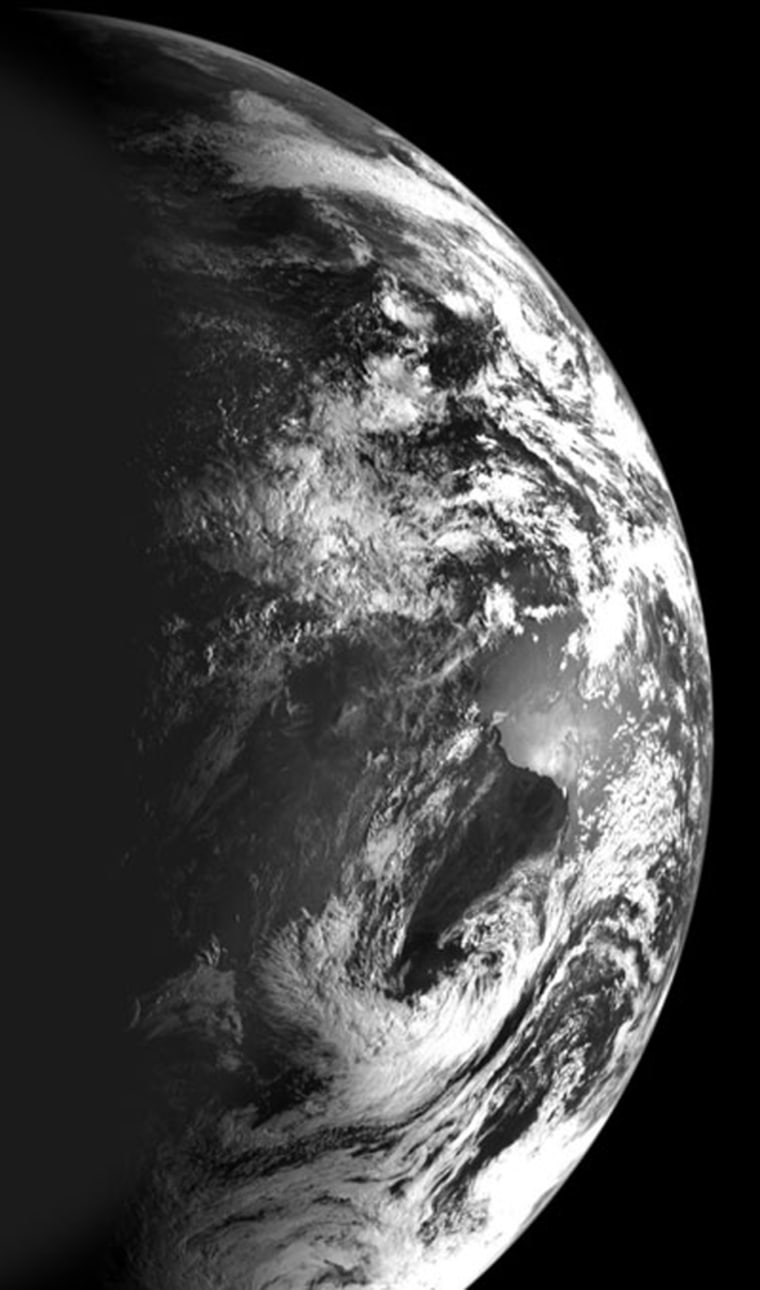India's Chandrayaan-1 lunar orbiter has successfully tested a vital camera and performed an orbit-raising maneuver that puts it on course to reach the moon by this weekend.
The Indian Space Research Organisation said Tuesday that Chandrayaan-1, the country's first-ever moon probe, entered its lunar transfer trajectory after a fifth and final orbit-raising maneuver carried out early that day. During the maneuver, the spacecraft's rocket engine fired for about 150 seconds, raising its apogee to about 236,121 miles (380,000 km) - the moon's average distance from Earth.
"Chandrayaan-1 will approach the moon on November 8, 2008, and the spacecraft's liquid engine will be fired again to insert the spacecraft into lunar orbit," ISRO officials said. All systems onboard the spacecraft are performing normally, they added.
The 3,042-pound (1,380-kg) Chandrayaan-1 has already beamed back the first images from the Terrain Mapping Camera it will use to map the lunar surface.
ISRO officials unveiled some of the images Friday, revealing a view of Australia from high above Earth. The camera, to be used to map the lunar surface with a ground resolution of 16.4 feet (5 meters), is one of 11 instruments aboard Chandrayaan-1.
Chandrayaan-1 snapped the photos on Oct. 29, spotting first the northern coast of Australia from an altitude of about 5,592 miles (9,000 km) at about 8:00 a.m. Local Time in India. About 4 1/2 hours later, the probe caught country's southern coast from a height of 43,495 miles (70,000 km).
India launched the $87 million Chandrayaan-1 spacecraft toward the moon on Oct. 22. The lunar orbiter includes a 64-pound (29-kg) impact probe, which it will release to crash into the lunar surface, and carries five Indian instruments and six others provided by the U.S., Britain, Sweden, Germany and Bulgaria.
Chandrayaan-1 will join Japan's Kaguya orbiter and China's Chang'e 1 spacecraft at the moon when it arrives in lunar orbit this weekend. The Japanese and Chinese probes launched in 2007. NASA plans to launch its next moon probe, the Lunar Reconnaissance Orbiter, in Spring 2009.
SPACE.com staff contributed to this report from New York City.
